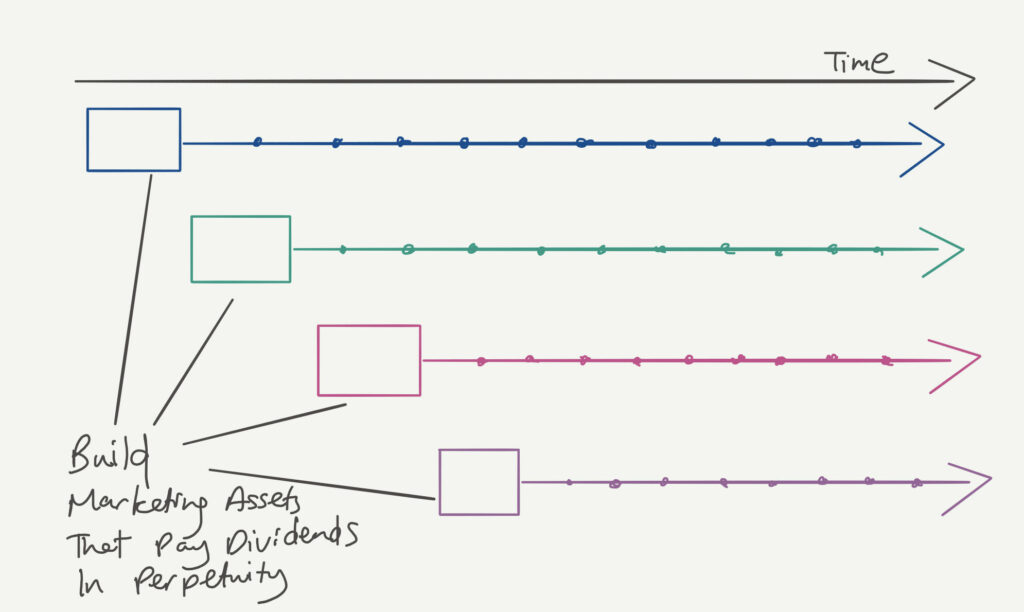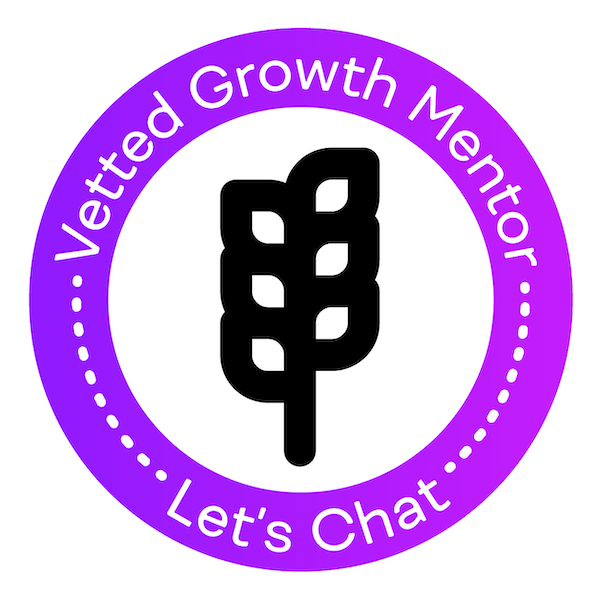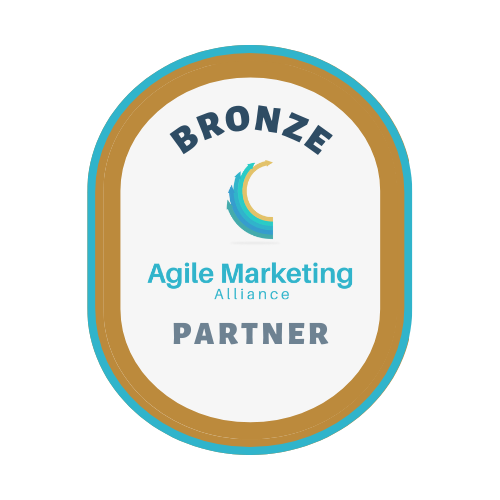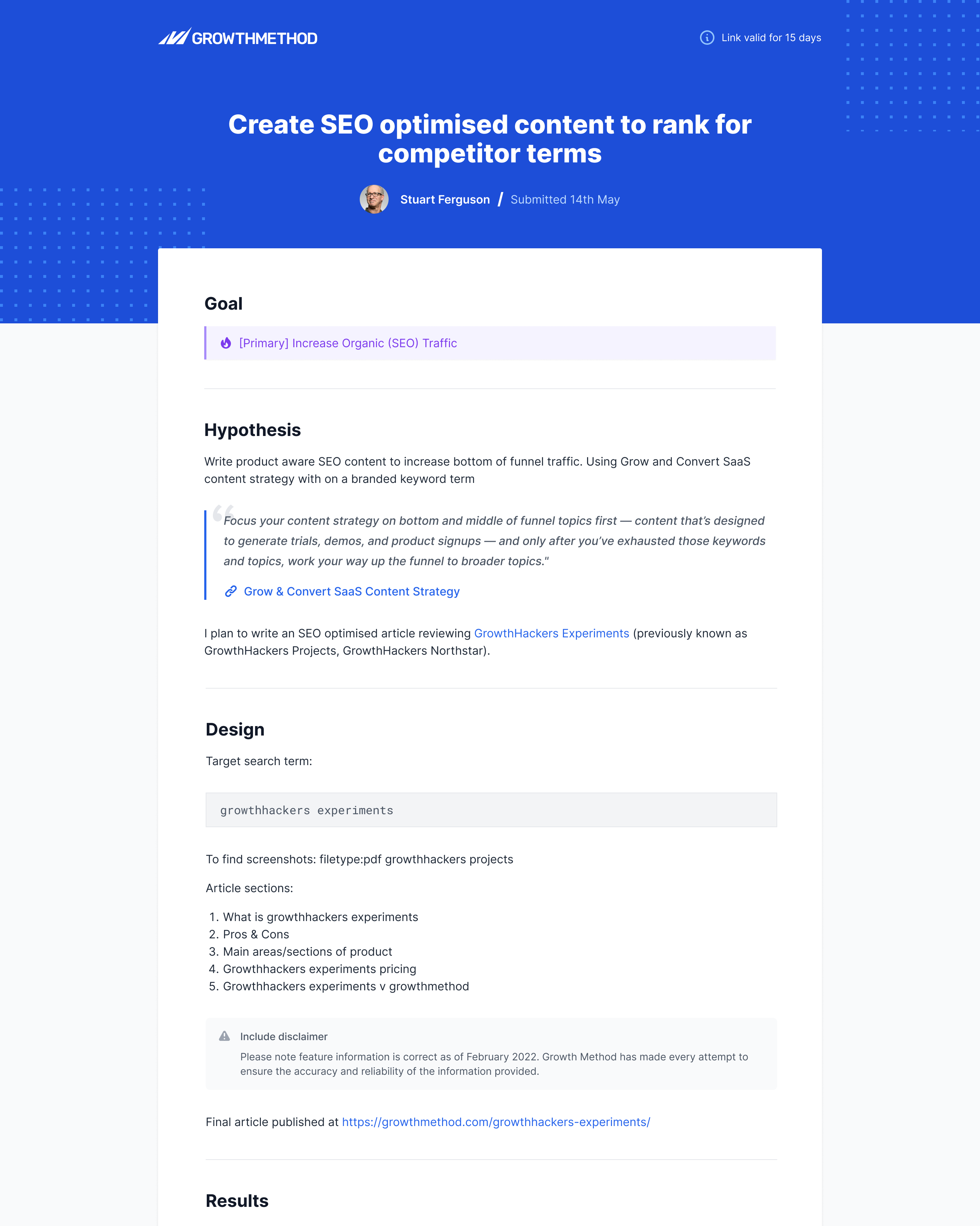Home / Principles /
3 Always-on assets over one-off campaigns
Article originally published in March 2024 by Stuart Brameld. Most recent update in April 2024.
Request a demo
Project management for growth and agile marketing professionals. Map your acquisition funnel, integrate analytics and run agile experiments.
Experiment results
Recent experiments results include competitor SEO, AI-driven content, exit-intent modals and AB testing homepage headlines.
Case study
"We are on-track to deliver a 43% increase in inbound leads this year. There is no doubt the adoption of Growth Method is the primary driver behind these results."
![]()
Certified
We are vetted mentors with Growth Mentor and a partner with the Agile Marketing Alliance.
Let’s run a campaign? No.
Your growth marketing strategy should focus on building assets that can deliver compound growth over time. One-off marketing programs, initiatives and campaigns should be avoided at all costs.
One-off marketing campaigns
If you or your team do one-off activities, such as any of the following, stop now:
- Perform primary market research in order to create an industry whitepaper that can be used in an ad campaign to potential customers
- Send a one-off email to known contacts that have interacted with your website in the last 6 months but haven’t taken further action
- Publish a blog post discussing a new trend in the industry and how your product can help
- Run a webinar to discuss new features and functionality in your upcoming product or service release
- Post on the company LinkedIn page about a new certification or award that the company recently gained
No successful company has been built on a campaign, a webinar, blog article, social media post, product hunt launch or email. Your aim in growth should be to build marketing resources that offer value indefinitely.
If you’re going to do it once, don’t do it at all.
Always-on marketing assets
An asset is anything that holds value and can be owned or controlled to produce positive economic value. The key piece here for growth marketers to remember is “positive economic value” i.e. the goal of your marketing outputs should be economic value.
There are a few inter-related concepts here to understand when it comes to assets:
- Always-on
- Linked
- Compounding
1 Always-on (repeatable) assets
Always-on is the simplest to understand – repeatable output is the secret to all growth metrics. Treat everything as a growth loop and build marketing assets that deliver value and pay dividends in perpetuity. Even seemingly one-off programmes (such as events) can be turned into repeatable programmes. Your goal as a growth marketer is to build assets, living breathing marketing assets, not fossils.
(Of note here is that trying the latest marketing trends or “hacks” often do not posses these repeatable characteristics)

Reduce the one-off singular action in favour of consistent ongoing investments. As said in the introduction – if you’re going to do it once, don’t do it at all.
2 Linked assets
Marketing leaders often invest in multiple marketing channels such as content, SEO and paid media – but they treat them as separate, unlinked activities. Great marketers treat channels and programmes as linked investments that can build momentum around an idea or asset over time.
“a bunch of smaller things joining together to form a giant that can function as more than the sum of its parts—is called emergence.“
Tim Urban https://waitbutwhy.com/2019/08/giants.html
For example, if you have a piece of research to share from first party data, you may decide to:
- Use retargeting audiences to get the content in front of new potential customers on Twitter, LinkedIn and Facebook
- Post the content or asset to your company social channels
- Request employees repost the content from the company social channels on their own profiles
- Continue with SEO optimisation to ensure new content or asset continues to move up the search rankings and gain traffic
- Build retargeting audiences mixed with non-converters and feed these back into your ad platforms
Growth accelerates when you are able to link marketing activities over time.
3 Compounding assets
The goal of your growth marketing strategy should be to build repeatable processes that can be continuously tweaked and improved to deliver compounding results over time
A great way to visualise and understand the power of compounding is through the wheat and chessboard problem.
If a chessboard were to have wheat placed upon each square such that one grain were placed on the first square, two on the second, four on the third, and so on (doubling the number of grains on each subsequent square), how many grains of wheat would be on the chessboard at the finish?
The answer is 18,446,744,073,709,551,615 (eighteen quintillion, four hundred forty-six quadrillion, seven hundred forty-four trillion, seventy-three billion, seven hundred nine million, five hundred fifty-one thousand, six hundred and fifteen.
https://en.wikipedia.org/wiki/Wheat_and_chessboard_problem
For more detail see our post on compound interest and flywheel marketing.
To summarise
Growth marketers should avoid one-off marketing campaigns and focus on building repeatable, scalable, always-on marketing assets that continue to provide value over time. Your goal as a growth team is to move from successful experiments, to big bet projects, to core always-on activity.
The core function of an engine is to take an input (fuel) and convert it in an output (mechanical energy) in the most efficient, predictable, repeatable way. Consider your marketing function as a similar system which takes an input (people, money, resources) to create an output (business leads and revenue) in a similarly efficient, predictable and repeatable way.
If repeatable output is the secret to all growth – how can you build repeatability and scalability into everything you do?
Growth marketing strategy principles
-
1 Focus over diversification
“Our 2023 marketing strategy is to invest in Twitter organic, Linkedin paid ads, content marketing, SEO and email”. Some practitioners call this spray and pray marketing, Emily Kramer calls it random acts of marketing. Whatever you call it, this isn’t a growth marketing strategy, this is a list of random tactics and channels. The worst… Read more
-
2 Process over tactics
“Growth has nothing to do with tactics and has everything to do with process. Silver bullets don’t exist, you need a growth machine.” Brian Balfour Look inside many functions within a business – sales, finance, research & development, IT – there is often a process discipline that doesn’t exist in traditional marketing teams. Conversely, look… Read more
-
3 Always-on assets over one-off campaigns
Let’s run a campaign? No. Your growth marketing strategy should focus on building assets that can deliver compound growth over time. One-off marketing programs, initiatives and campaigns should be avoided at all costs. One-off marketing campaigns If you or your team do one-off activities, such as any of the following, stop now: No successful company has been… Read more
-
4 Impact over activity
A growth marketing strategy should prioritise impact over activity, which typically means being aligned to business revenue. At Growth Method we believe every marketing function should contribute to revenue and should should be part of the core revenue engine, alongside sales. “Position marketing as a strategic growth lever for the company. Know the math for… Read more
-
5 Data over opinions
A good growth marketing strategy uses data to guard against opinions, feelings, emotions and bias. With a combination of both quantitative and qualitative data growth teams can bring together the what and the why in order to make more informed decisions. Data should inform all aspects of your growth marketing programme including: Data-informed, not data-driven… Read more
-
6 Speed over perfection
A big part of marketing is getting something live, noticing how the market reacts, and then iterating to make it better based on what worked well (this process is the core tenant of the scientific method). That’s why following a regular cadence of launching new experiments is a critical step in improving everything about your… Read more
-
7 Outside in v inside out
A growth marketing strategy is a customer centric strategy Understanding customers and representing their voice within your organisation is perhaps the most important job of a marketing team. The antithesis to the HiPPO marketing approach of “just listen to your manager” is customer development and “just listen to the customer.” Deeply understanding your customer and… Read more


